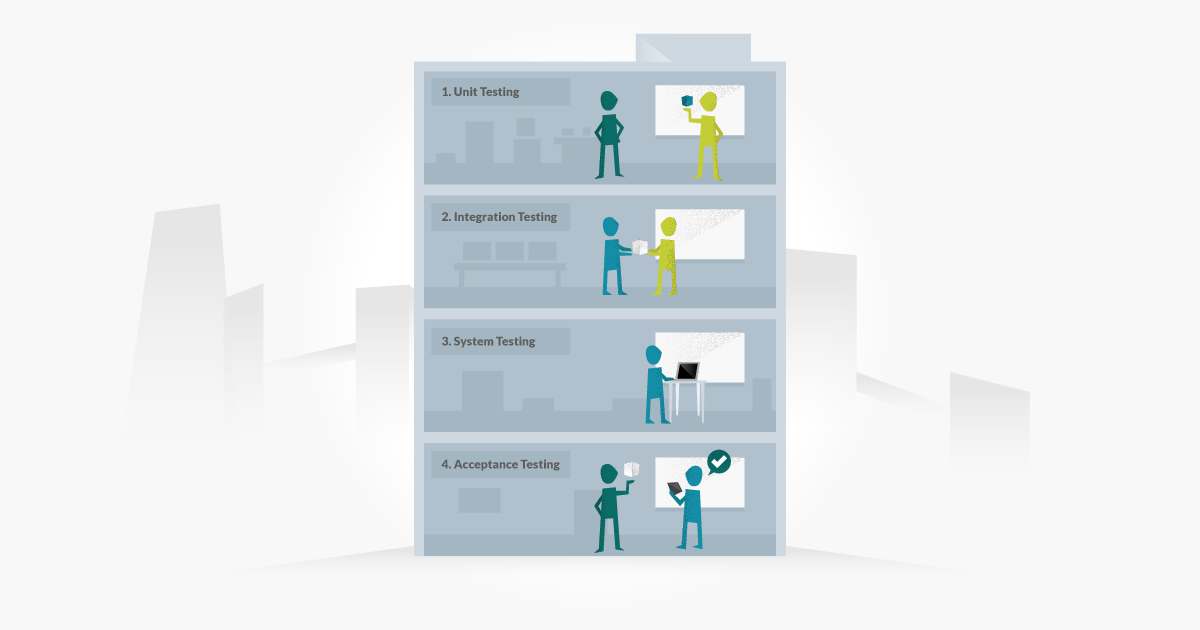Before software is released, it undergoes thorough testing. Chances are you already know this.
Stages – or “levels” – of testing are completed prior to the software being used. These levels of testing in software engineering are done in ascending order.

Levels Of Testing In Software Engineering:
- Unit Testing
- Integration Testing
- System Testing (multiple types of testing)
- Acceptance Testing (it’s own type – UAT)
Each level of testing has a particular purpose and provides value to the software development life cycle. Some levels are their own type of testing. For example, unit testing includes just that; unit testing but integration testing can include many types of testing.
Let’s take a look at each of the levels of testing in software engineering.
Unit Testing
The first level of testing, unit testing, is the most micro-level of testing. It involves testing individual modules or pieces of code to make sure each part or “unit” is correct. A “unit” can be a specific piece of functionality, a program, or a particular procedure within the application. Unit testing helps verify internal design and internal logic, internal paths, as well as error handling.
The unit testing level includes a single type of testing; unit testing. Unit tests are done by the developer who wrote the code.
Integration Testing
Integration testing is done after unit testing. This level tests how the units work together. Individual modules are combined and tested as a group. It’s one thing if units work well on their own, but how do they perform together? Integration testing helps you determine that, and ensures your application runs efficiently. It identifies interface issues between modules.
There are a few techniques that can be used for conducting integration testing:
- Big Bang Testing
- Top Down Approach
- Bottom Up Approach
Big bang testing involves testing the entire set of integrated components together simultaneously. Because everything is integrated together and being tested at one time, this approach makes it difficult to identify the root cause of problems.
The top down approach starts by testing the top-most modules and gradually moving down to the lowest set of modules one-by-one.
The bottom up approach starts with testing the lowest units of the application and gradually moving up one-by-one.
System Testing
This level of testing is the first level that tests the entire application as a whole. It is often done in a mirrored production environment. This level of testing is actually a series of tests whose purpose is to test the application end-to-end.
System testing is particularly important because it verifies the technical, functional, and business requirements of the software. System testing is the last level of testing before the user tests the application.
There are dozens of types of system testing, including usability testing, regression testing, and functional testing. This level of testing is typically done by the testing team and includes a combination of automated testing and manual testing.
Acceptance Testing
The final level of testing, acceptance testing, or UAT (user acceptance testing), determines whether or not the software is ready to be released. Let’s face it, requirements change throughout the development process. It’s important that the user verifies the business needs are met before the software is released into production.
Are the functional requirements met? Are the performance requirements met? These are the questions that are answered during acceptance testing level. UAT is the final say as to whether the application is ready for use in real life or not. This phase also involves change control – managing requested modifications and new feature requests.
Acceptance testing should be done by the business user / end-user.
In Conclusion
These levels of testing in software engineering show that testing needs to be a part of the entire software development process. Don’t wait to test once you’re ready to release – you’ll likely miss some of the most important parts of software testing, and your application will suffer.
About the writer
Jake Bartlett
Jake Bartlett lives and works in Nashville, Tennessee. He has a background in software testing, customer support, and project management.
All Jake Bartlett's articles
